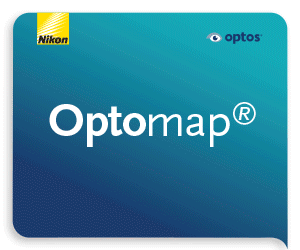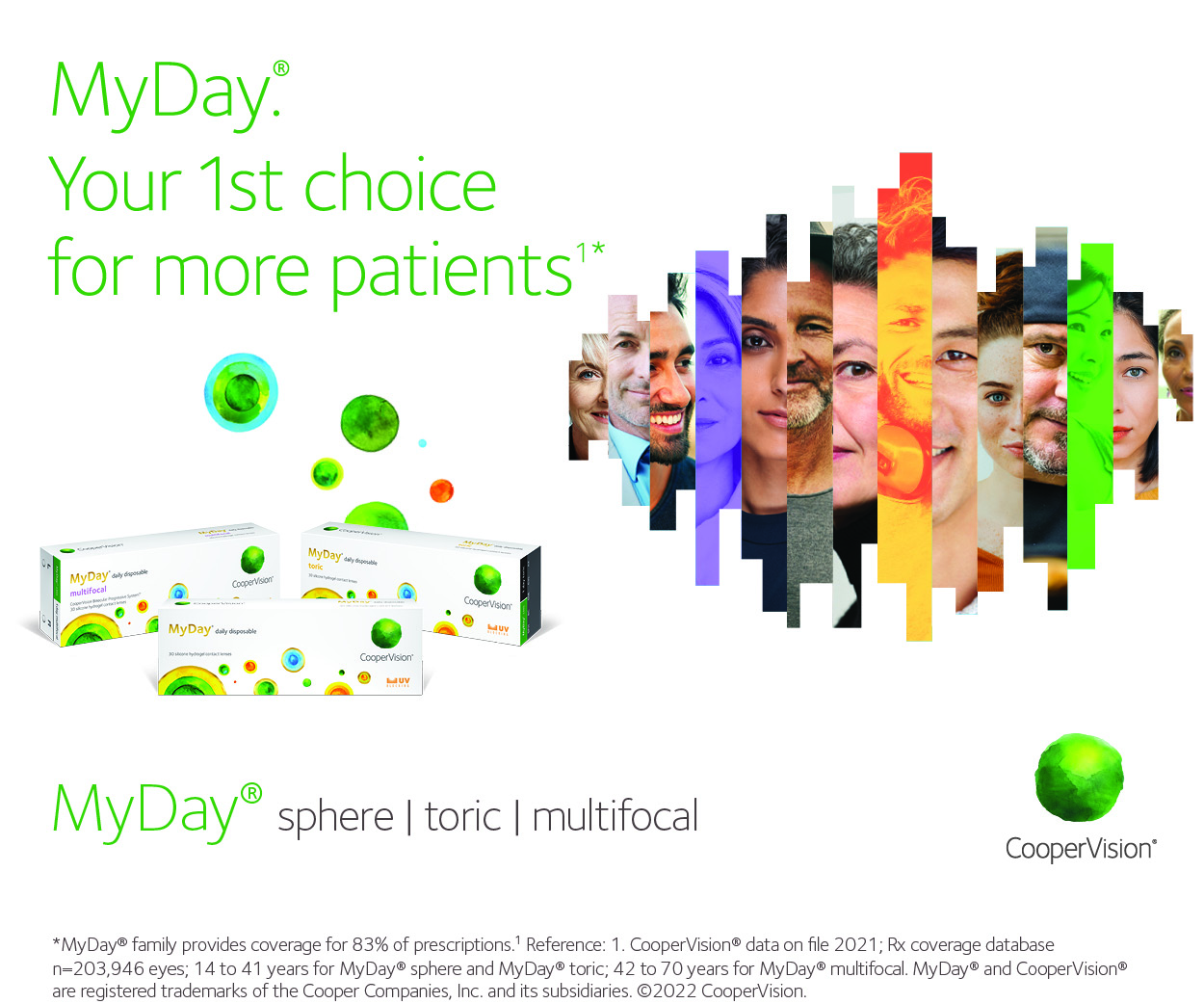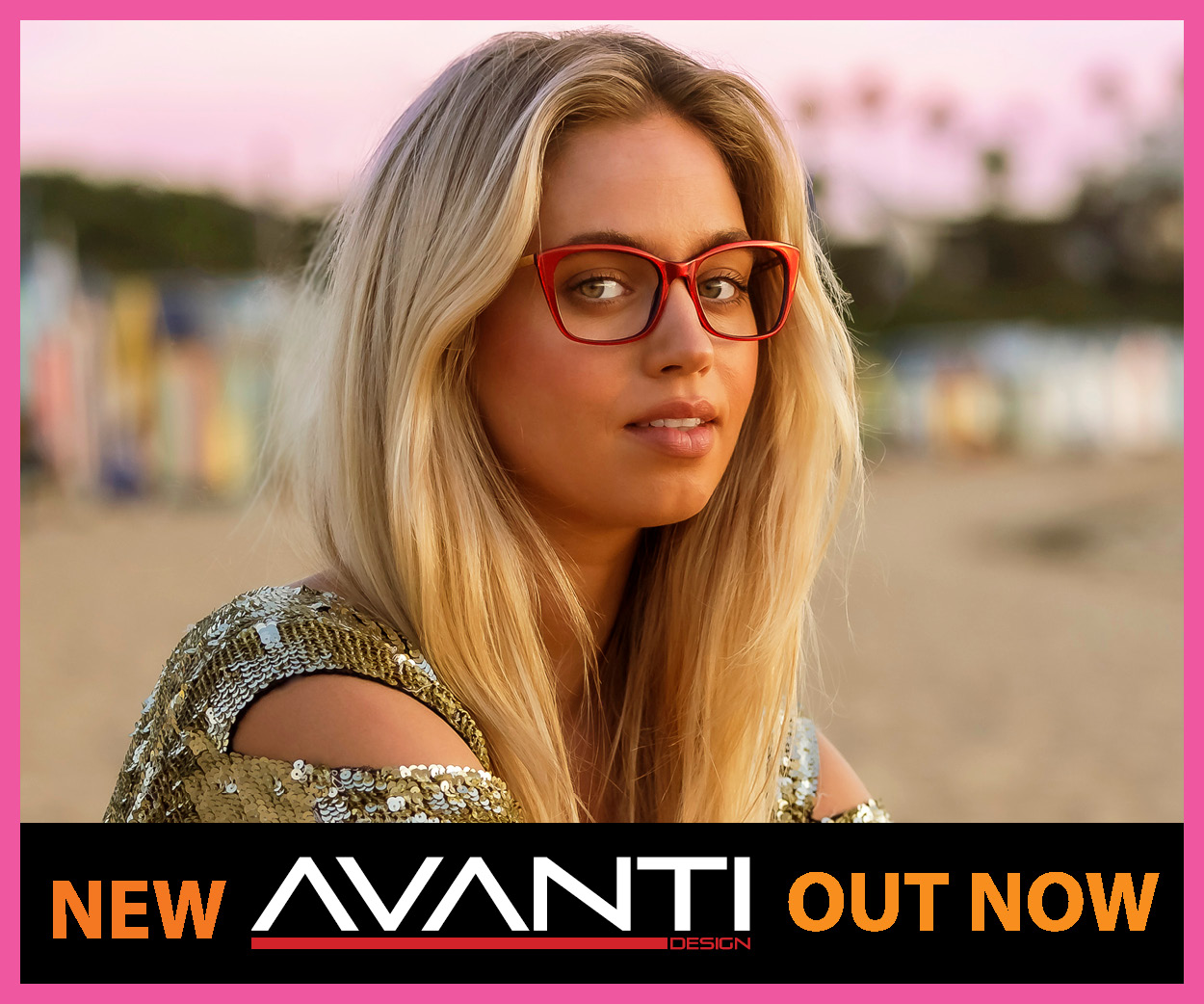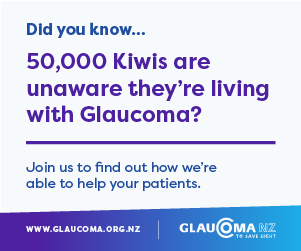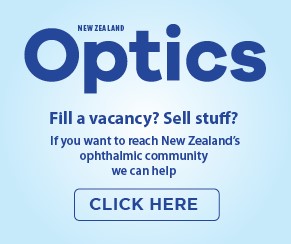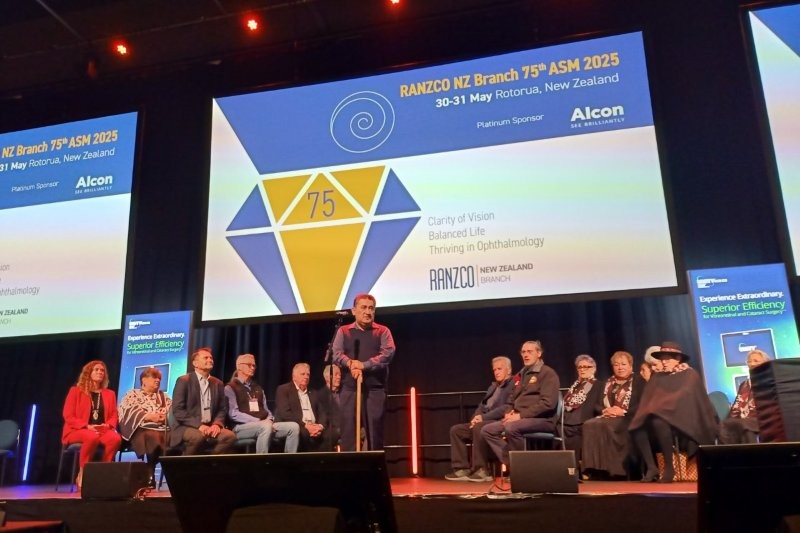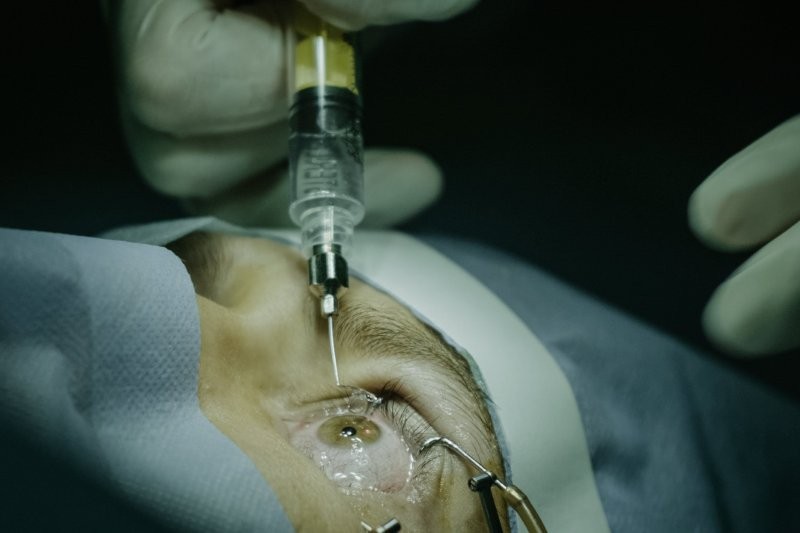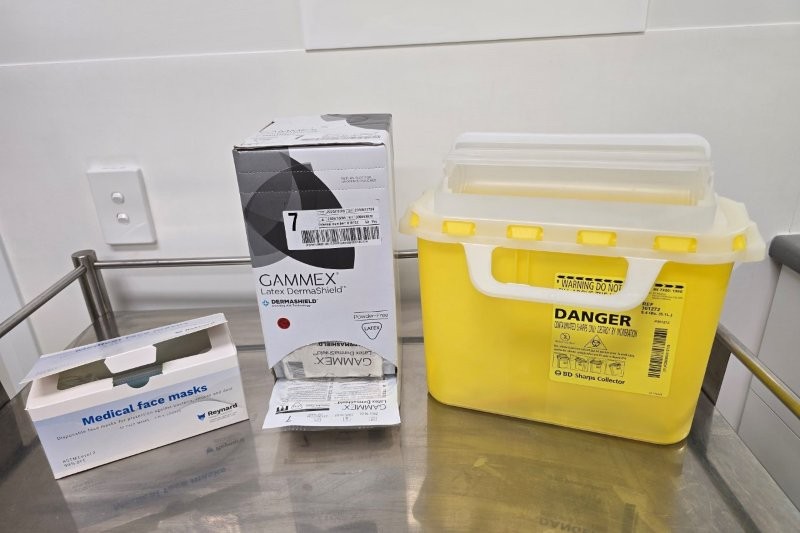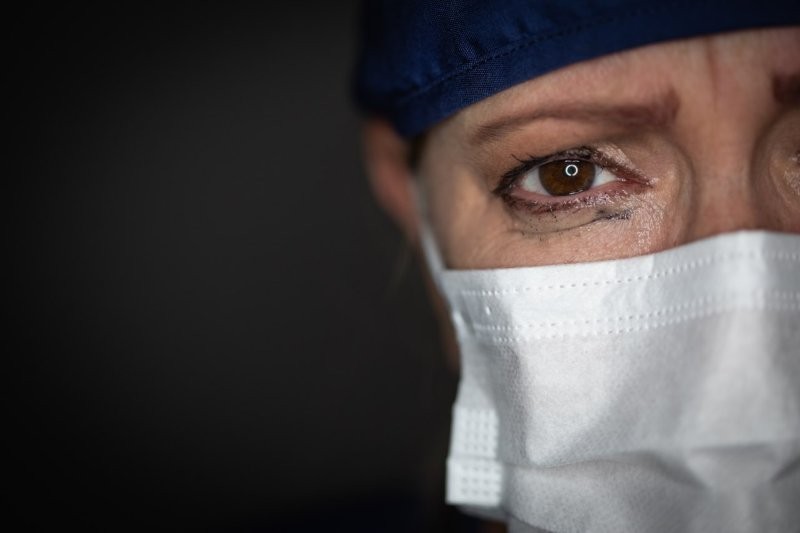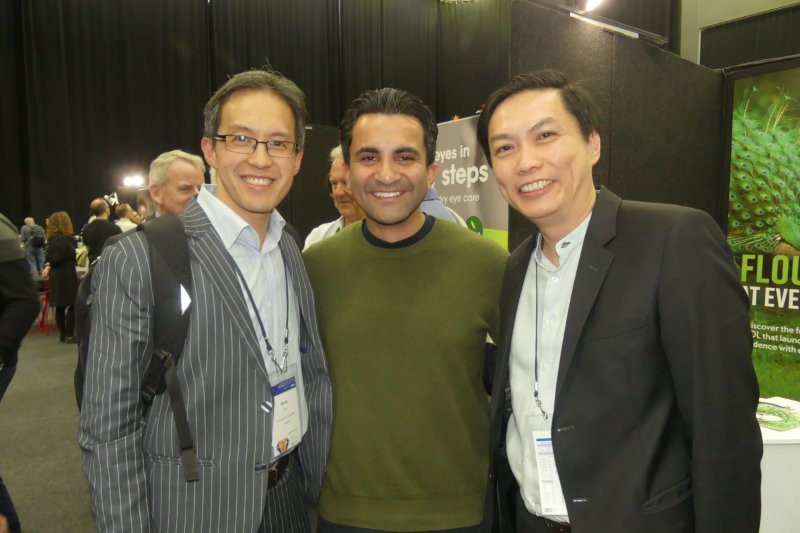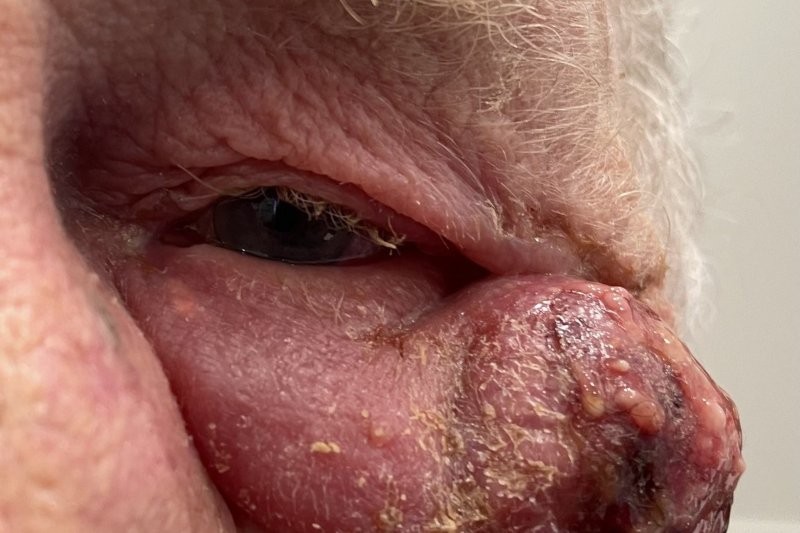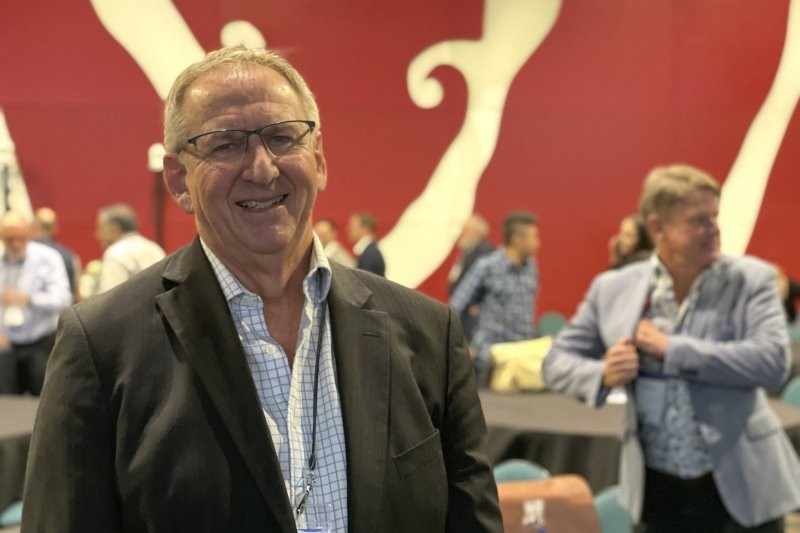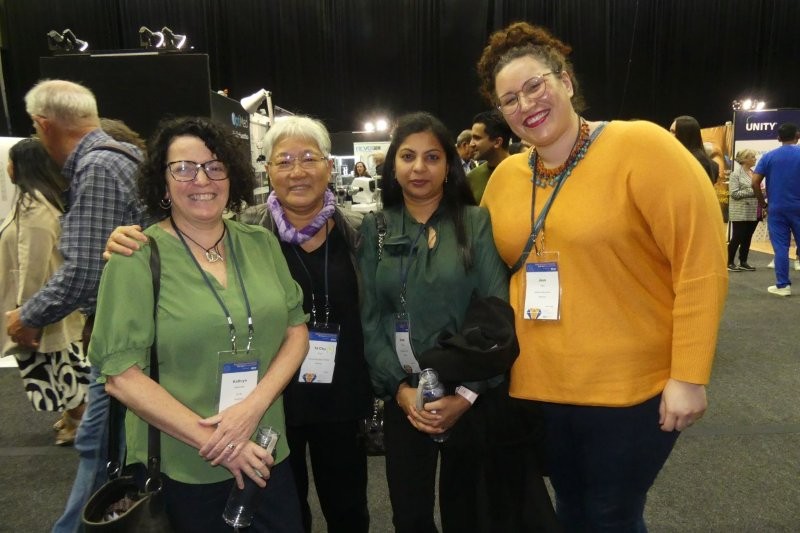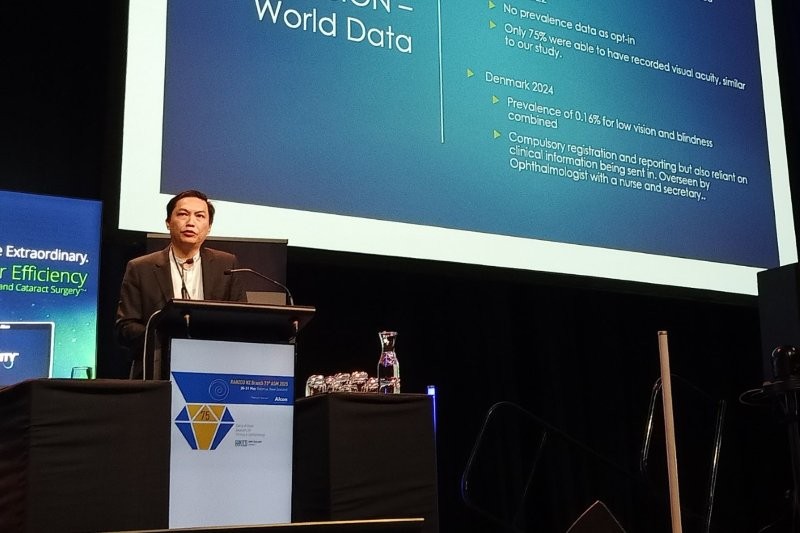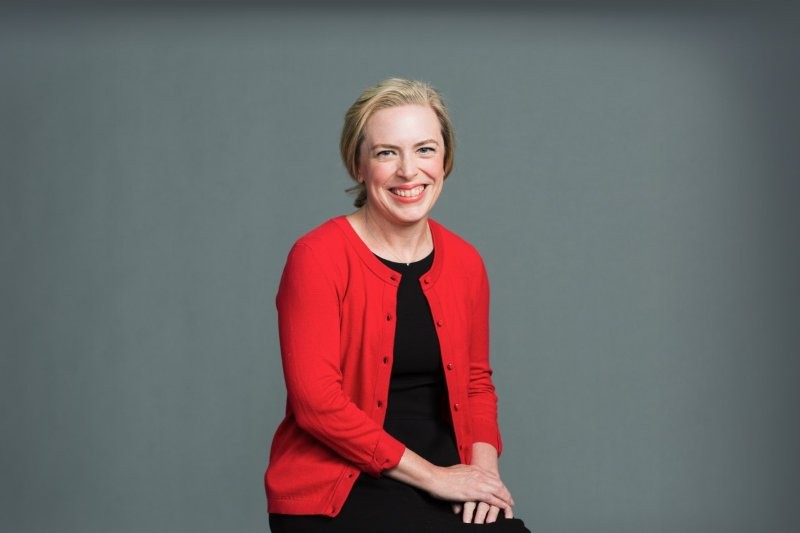Shaping the future of eyecare
Bright, warm days in Rotorua reflected the collegial nature of this year’s RANZCO NZ Branch Annual Scientific Meeting. The event brought together brilliant minds from around the country and overseas, sharing new insights in ophthalmology.
The first day was registrar training day, where Auckland’s Professor Charles McGhee joined three international keynote speakers, Professors Soon-Phaik Chee (Singapore) and Laura Balcer (US) and Associate Professor Julie Schallhorn (US), to impart knowledge of their respective sub-specialities to aspiring trainees and non-trainees.

Dr Sarah Welch, Esmeralda Lo Tam, Prof
Charles McGhee, Dr Aaron Wong and A/Prof
James McKelvie
The next two days were spectacularly organised with the main symposium running alongside a full nursing stream; the former, a combination of talks from keynote speakers and doctors from around the country.
Prof Balcer discussed the importance of clinical judgment in diagnosing optic neuritis. She outlined key research that has led to the inclusion of optic neuritis in the diagnostic criteria for multiple sclerosis and noted that disease-modifying therapies, such as natalizumab, may now be considered in cases involving a first demyelinating lesion of the optic nerve. She also presented several interesting patient cases. One particularly memorable case involved a 27-year-old presenting with symptoms suggestive of raised intracranial pressure. The patient also reported sciatica symptoms, prompting a spinal MRI that revealed a spinal ependymoma. This case served as a reminder of the value of taking a thorough history, as optometrists and ophthalmologists may be the first to detect conditions extending well beyond the eye, she said.

International keynotes Profs Laura Balcer, Soon-Phaik Chee
and A/Prof Julie Schallhorn
A/Prof Schallhorn provided an analysis of the current literature on presbyopia-correcting intraocular lenses. Her talk highlighted the challenges of choosing the most appropriate lens due to the variability in study methodologies. New standardised patient questionnaires are being developed that may improve comparability of future studies, she said. She also presented cases where anterior segment OCT has demonstrated clinical utility in assessing abnormal growths, including ocular surface squamous neoplasia and squamous cell cancer, and for planning anterior stromal treatments and repeat refractive surgery.
Prof Chee wowed us all with her graphic videos demonstrating helpful microsurgical techniques for managing tricky cataract surgery. She also shared her approach to operating on advanced black and white cataracts and her impressive suture snare technique which uses scleral suturing with 7-0 gauge Gore-Tex to stabilise dislocated intraocular lenses.

Dr Justin Mora, Cori Marsters, Chrissie Cowan (front), John Turi-Tiakitai and Prof Nitin
Verma with Drs Liz Insull, Peter Hadden and Jesse Gale
Artificial intelligence and technology
A few talks from our junior doctors highlighted the potential for technology to assist patient assessment. Medical student Andrew Holmes presented his work on identifying individuals at risk of primary open-angle glaucoma using machine-learning algorithms. His analysis found that the strongest predictors were ophthalmic factors and systemic comorbidities such as elevated cholesterol, high HbA1c and low blood pressure. Interestingly, no lifestyle factors appeared among the top 15 risk variables. With further research, this model has the potential to support the development of a prognostic risk calculator for glaucoma.
Dr James Lewis trained a convolutional neural network, using >27,000 ocular images, to detect and accurately measure ptosis in patients. This tool had an accuracy of 92.3% on test data and may offer a more objective method for assessing ptosis, particularly in cases involving young children or difficult clinical examinations.
Dr James Corbett then shared his data showing the feasibility and repeatability of home visual field testing using personal computers. This could be a valuable adjunct in glaucoma monitoring and would require less follow-up in person making glaucoma care more accessible.

Drs Dean Corbett, James Corbett, Sam Preston
and Garry Singh
New techniques explained
Auckland’s Dr Kyla Fung shared her work on prescribing colchicine for preventing fibrosis in patients after a trabeculectomy. In her patient cohort, 500µg of colchicine per day reduced ischaemia and led to favourable bleb outcomes.
Dr Sophie Hill, a medical retina consultant in Auckland, shared her case series of patients who were switched to the new intravitreal medication faricimab (Vabysmo), after failing Avastin and Eylea treatment. She found benefit in most patients with neovascular age-related macular degeneration, but no benefit in patients with vein occlusions.

Alcon’s Soojan Hong with Drs Mark Donaldson and
Sophie Hill
Whangarei-based oculoplastic specialist Dr Anna March de Ribot then discussed patient outcomes with her new treatment, the MARCH technique, for removing lower eyelid lesions. This novel approach eliminates the need for a flap or graft and demonstrated great cosmetic outcomes.
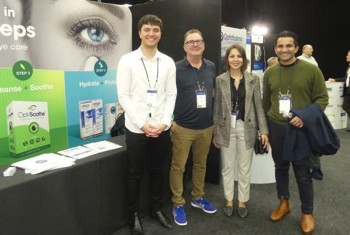
AFT’s Xavier Glass, MSO’s Gethin Sladen, Roche’s
Shainal Awadh and Dr Sid Ogra
Burnout a hot topic
Throughout the meeting, in and out of the presentations, talk of burnout was on people’s lips: from personal stories shared over drinks and at the Skyline dinner’s Q&A session between Drs Kevin Taylor and Lucy Lu to Otago registrar’s Dr Theo Sutedja’s ‘Work satisfaction, stress and burnout among ophthalmologists in New Zealand’ and motivational speaker Dani Fennessy’s ‘From burnout to breakthrough: a story of healing and hope’ presentations.
Dr Sutedja’s survey of New Zealand ophthalmology registrars found burnout is common and recurring, with only 15% of those experiencing burnout taking time off because of it. Three out of five participants had had burnout at least once, four in 10 greater than or equal to twice and one in 10 greater than or equal to five times. “Addressing burnout is vital to protect the workforce and patients who count on it,” said Dr Sutedja.

Drs Jerome Languido and Theo Sutedja with
RANZCO NZ chair Dr Liz Insull (centre)
Cataracts a key workforce lever
Rotorua Eye Clinic’s Dr Derrell Meyer shared his practice’s public-private partnership experience for clearing the cataract backlog in the Rotorua area. There is clearly enough work for everyone in public and private when it comes to cataracts, he said, and “cataracts were a key lever to improve workforce retention in public.” Modelling showed there may be 483,000 people in New Zealand with cataracts right now. In 2018, public and private capacity was roughly equal with a 25-year backlog, said Dr Meyer, while from 2024 the combined capacity would have a 10-year backlog. He proposed a three-tiered approach to help solve the problem: private outsourcing for short-term capacity relief; public insourcing to build sustainable public capacity; and dedicated content cataract centres to unlock lock long-term efficiency.

Penny Wilson, RANZCO NZ Branch 2025 ASM convenor
Dr Verona Botha and Arina Khramenko
Medals and awards
This year’s Dorothy Potter Medal Lecture was delivered by Nelson ophthalmologist and Te Whatu Ora clinical lead, planned care, Dr Derek Sherwood, who spoke in depth about the challenges of driving change within healthcare systems and the critical role that doctors play in leading and supporting this process. The John Parr Medal Lecture was delivered by Prof Chee who shared more amazing videos demonstrating her multiple techniques to rescue eyes where cataract surgery does not go the way it was planned!
The Professor Anthony Molteno Innovator’s Lecture was delivered by Professor Paul Donaldson, from the Department of Physiology, University of Auckland. He shared his fascinating work looking into the role of free and bound water, as well as ion flow through a lens, in presbyopia and cataract formation. These insights may be able to help guide the development of treatments that target lens water content for prevention and delay of cataract formation in the future.
This year, the best paper award went to ophthalmology registrar Dr Natalie Allen for her PhD research paper ‘Attitudes to eye donation in Aotearoa’. Her qualitative study highlighted a widespread lack of awareness about eye donation in New Zealand and explored the factors that may both encourage and discourage individuals from choosing to donate. The two runners-up were Dr Zung Mai for his work ‘Refractive changes and optimal follow up time for children with retinopathy of prematurity’ and Dr Jane Shi’s paper ‘A decade of glaucoma prescribing in Aotearoa’.

Drs Himanshu Wadhwa and Natalie Allen
In conclusion
This year’s conference offered a rich exchange of clinical insights, research advancements and practical innovations that promise to shape the future of eyecare in New Zealand. It also rewarded effort and explored some of the challenges facing ophthalmology, especially with respect to the workforce. It will be interesting to see how these play out and I am looking forward to hearing more at the next RANZCO NZ conference!

Drs Emma-Jane Paton, Amy Chen, Jahnvee Solanki
and Jacob Mitchell
With additional reporting from Susie Hill.
Dr Jahnvee Solanki is a non-vocational ophthalmology registrar at Greenlane Clinical Centre. She completed her bachelor of medicine and bachelor of surgery at Auckland University in 2020 and a postgraduate diploma in ophthalmic basic sciences with the University of Sydney in 2024.




